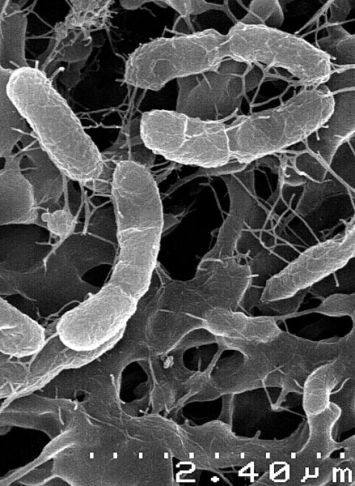Difference between revisions of "Category:Bacteria - Overview"
Jump to navigation
Jump to search
| Line 1: | Line 1: | ||
| − | == | + | {{frontpage |
| − | + | |pagetitle =Bacteria Overview | |
| − | A typical bacterial cell is composed of an outer capsule, a cell wall, a cell membrane, cytoplasm containing nuclear material and | + | |pagebody =A typical bacterial cell is composed of an outer capsule, a cell wall, a cell membrane, cytoplasm containing nuclear material and, if motile, appendages such as flagella and fimbrae or pili. Some species of bacteria are more resistant to environmental influences than others, particularly those species of bacteria that are able to produce spores which can remain inactive until the appropriate environmental conditions prevail allowing the bacteria to resist conditions such as freezing, wet, dry or hot |
conditions.<br /> | conditions.<br /> | ||
The structural features of pathogenic bacteria are important in the production of disease and also very useful for the identification and diagnosis of infection in veterinary medicine.<br /> | The structural features of pathogenic bacteria are important in the production of disease and also very useful for the identification and diagnosis of infection in veterinary medicine.<br /> | ||
| − | + | |contenttitle =Content | |
| − | + | |contentbody =<big><b> | |
| − | + | <categorytree mode=pages>Bacteria - Overview</categorytree> | |
| − | = | + | </b></big> |
| − | + | |logo =Bacteria logo.jpg | |
| − | + | }} | |
| − | |||
| − | |||
| − | |||
| − | |||
[[Category:Bacteria|A]] | [[Category:Bacteria|A]] | ||
Revision as of 10:30, 5 August 2010
Bacteria Overview
A typical bacterial cell is composed of an outer capsule, a cell wall, a cell membrane, cytoplasm containing nuclear material and, if motile, appendages such as flagella and fimbrae or pili. Some species of bacteria are more resistant to environmental influences than others, particularly those species of bacteria that are able to produce spores which can remain inactive until the appropriate environmental conditions prevail allowing the bacteria to resist conditions such as freezing, wet, dry or hot
conditions.
This category currently contains no pages or media.
